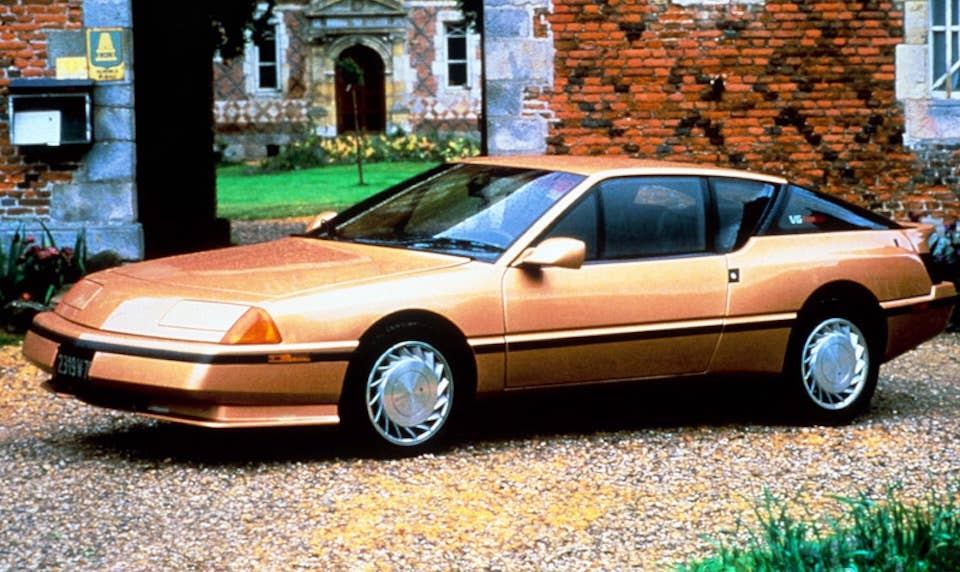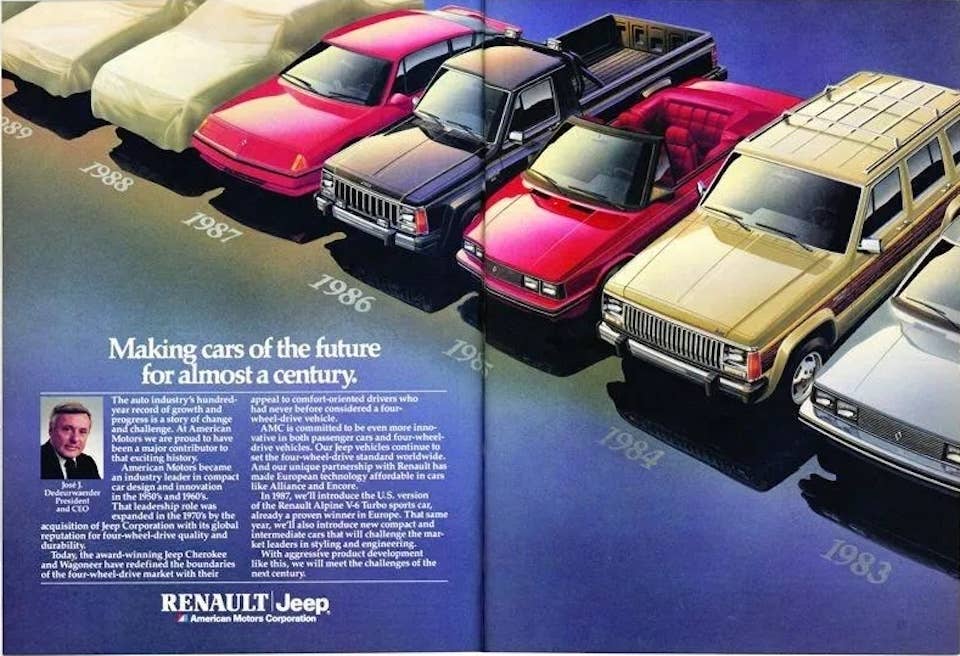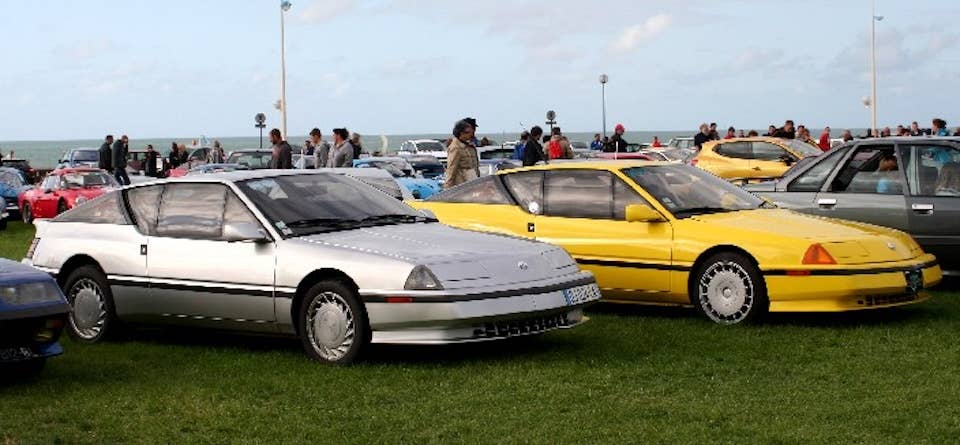[ad_1]

1987 AMC GTA USA prototype. Renault via FavCars.com
The Americanized GTA USA underwent significant modifications, going beyond the oversized bumpers commonly seen on European imports of that era. The chassis was overhauled, featuring a stamped steel front subframe in place of the Euro model’s tubular design, along with reinforced doors for enhanced side-impact protection. Interior elements were refined, the headlights were replaced with flip-up units, emission controls were added (resulting in a 20 hp loss), and the suspension received adjustments. These changes added notable weight, bringing the total to a reported 2,921 lbs. The weight distribution was said to have improved from 37-63, according to Car Magazine, to approximately 40-60.

1987 AMC GTA USA teased in a mid-1980s Renault-AMC advertisement.
Renault aimed to introduce the car to showrooms by March 1987, with AMC running ads in the mid-’80s to generate anticipation for this sleek new sports car. By December 1986, Renault had produced 21 pre-production vehicles, setting the stage for a planned 500-unit production run in 1987. However, Renault itself was facing challenges, partly due to its investment in a struggling AMC and the construction of a cutting-edge factory in Canada (which would eventually produce the Dodge Challenger). Despite pressure to sever ties with AMC, Renault’s chairman at the time, Georges Besse, favored perseverance, especially with Jeep’s growing success following the launch of the XJ Cherokee and YJ Wrangler.
Tragically, Besse’s intentions were cut short on November 11, 1986, by the actions of a French extremist group. With Besse no longer in the picture, Renault’s commitment to AMC wavered, leading to the decision to sell its stake to Chrysler in March 1987 – the same month the AMC GTA USA was set to hit the market. Alpine held out hope for a distribution deal with Chrysler and invested in ramping up production capacity in anticipation. Despite these efforts, no agreement was reached, and the closest the GTA USA came to reality was seeing some of its design elements incorporated into the Alpine A610.

Surviving AMC GTA USA prototypes on display in Europe. Note their protruding front bumpers and flip-up headlights. Alpine Dieppe, CC BY-SA 4.0
Today, most of the 21 pre-production AMC vehicles still exist, with two reportedly preserved at the factory and the others either transformed into Alpines or scattered across Europe… except for one. In December 2000, one of the cars was imported to the United States, finally completing the journey it was intended for. It stands as a symbol of an alternative automotive timeline, where AMC could have thrived, survived, and competed with a Jeep-less Chrysler for a spot among the Big Three.
Imagining such a scenario leads one to consider AMC versions of iconic Renault models like the A610, Twingo, Espace, and Clio V6. Perhaps an AMC Sport Spider or a link between AMC and Renault’s Formula 1 triumphs in the 2000s. However, these are merely fictional musings, products of a creative mind. Nonetheless, it’s evident that our reality has also witnessed its fair share of imaginative endeavors; they just didn’t bear the AMC emblem.
If you have tips or questions for the author, reach out to them at: james@thedrive.com
[ad_2]
